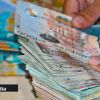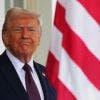
Most people felt relieved when Cabinet decided to shelve the Heritage City project. Thereupon the Light Railway Train (LRT) system, renamed Metro Express, is perceived in the public as a better project. Now that a high-level ministerial committee has been set up to “reconsider” the Heritage City purpose, one should bear in mind that both mega-projects are monstrously inflationist, the more so if implemented concurrently.
Publicité
Government has not yet brought forward a detailed plan with regard to a new mass transit system. The budget speech 2016-2017 just points out that it “will be kick-starting this project with the construction of the Victoria Terminal under the BOT model”. But a piecemeal approach to such a huge construction project leaves the door open to cost overruns and to mistakes due to emphasis on quick delivery rather than on quality.
A holistic approach is instead warranted whereby those responsible for the project management have an overview of the process from start to finish. Judicial technical planning and allocation of financial and physical resources are required for the project to be implemented in an effective manner. Also crucial to meet the objectives is the collaboration of all relevant public and private sector stakeholders.
In so far as the LRT project is financed, albeit partly, by public funds, taxpayers must be informed about its overall cost so as to properly anticipate the additional amount of taxes that they will pay in the future. Under the previous government, the cost of the project was estimated in 2013 at Rs 24.8 billion, and Rs 539 million were already spent. In addition, the Treasury disbursed some Rs 2 billion to compulsorily acquire 47 acres of land. At present, thanks to a grant from India, the ministry of finance has earmarked nearly Rs 10 billion for Metro Express, a sum which remains however largely insufficient to complete the project.
Thus, the government is relying on private participation to finance the remaining cost. It can seek equity investment, or else issue very long-term specific bonds, but these will have to be repaid with interest. Either way, the viability of the project will hinge on the pricing policy. In case the state does not use market pricing, it will subsidise the metro ticket with taxpayers’ money. That policy is not only uneconomical but also unfair to rural inhabitants: much of the tax burden will fall on them, for they will not travel by metro as often as urban commuters. This constitutes a transfer of wealth from the former to the latter.
In 2010, the then minister of public infrastructure stated in Parliament that a LRT system would be successful if it carried “15,000 passengers per hour, which was impossible in Mauritius”. Maybe it can achieve the necessary break-even ridership level if the transport alternatives are made much more expensive. In this instance highway tolls should be introduced, fees for public parkings increased significantly, and petrol prices subject to market prices. But will politicians have the guts to apply such unpopular measures? Suffice it to say that, to keep the retail prices of gasoline and gas oil artificially low, one billion rupees have been drawn on the Price Stabilisation Account to absorb losses made on all consignments from November 2015 to August 2016.
Government can offer inducements in the form of cheap loans and outright subsidies to entice private investors into the LRT project. Still, the risk to go bankrupt is too high as railways need constant maintenance and upkeep. If the project were profitable (revenues exceed costs), private investors would line up to take the full cost of the project.
Since factors of production are scarce, every choice requires that something else must be given up, and the value placed on the best alternative foregone is the opportunity cost. Investors look at economic value added (EVA), the true economic profit: they estimate the opportunity cost of all capital invested, and deduct the sum from earnings before interest but after tax. Suppose that a Rs 20 billion investment in a LRT project provides a return of 5%. If other investments of comparable risk generate 10% returns, the LRT promoter will have a negative EVA (economic loss) of one billion rupees (5% minus 10% times 20 billion).
For sure, a LRT system makes some economic sense at the national level. The Curepipe-Port Louis corridor serves inhabited, developed and growing areas where a lot of people work and stay, and where business activities abound. A metro will alleviate traffic congestion, improve the quality of life, raise overall productivity, increase the investment attractiveness of the country and encourage tourists to spend the day in town for the benefit of restaurants and shops.
The major argument in favour of big infrastructure programme is that it spurs economic growth with its multiplier effect. But is there a real demand for a metro divorced from a functioning consumer market? Resources will be locked up for decades in a railroad when they can be better used elsewhere.
High deficit spending fails to recognise the opportunity cost of the idle resources (the unemployed) and the cost to society of the taxation required to fund the programme. It also ignores the opportunity costs of exacerbating the resource misallocation, of skewing markets and of crowding out private investment. It sets in motion a boom-bust cycle that will end in sky-rocketing interest rates.
Metro Express is a creature of government, not of private markets. It is a political, not an economic, choice. It makes politicians look good as they can praise a sort of grand achievement. It is an opportunity that bears no cost for them.

Notre service WhatsApp. Vous êtes témoins d`un événement d`actualité ou d`une scène insolite? Envoyez-nous vos photos ou vidéos sur le 5 259 82 00 !





















